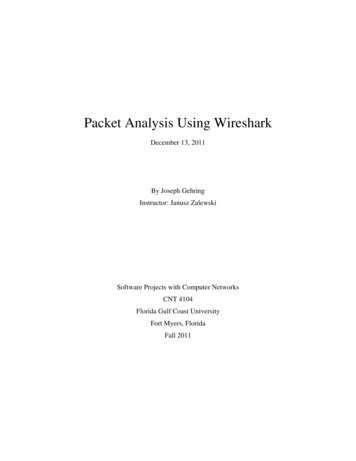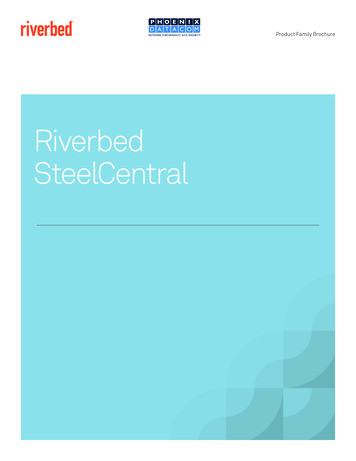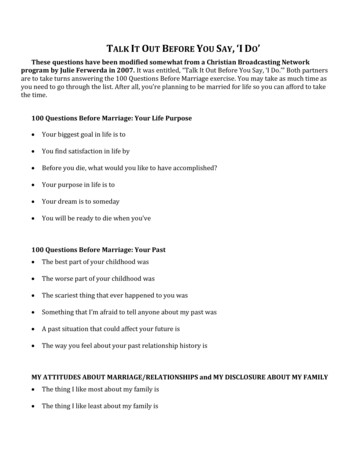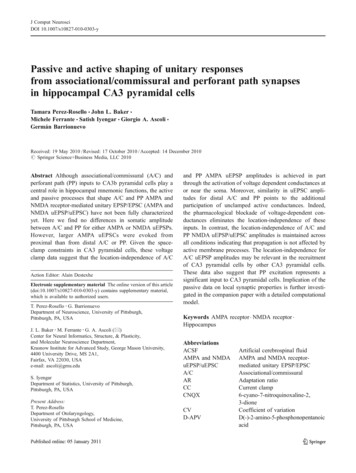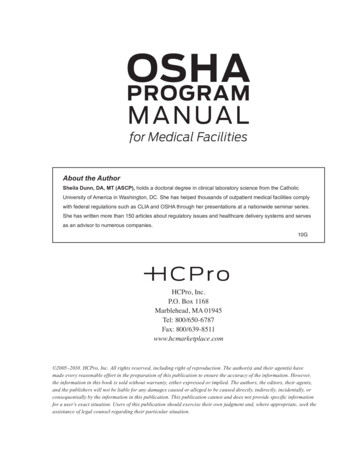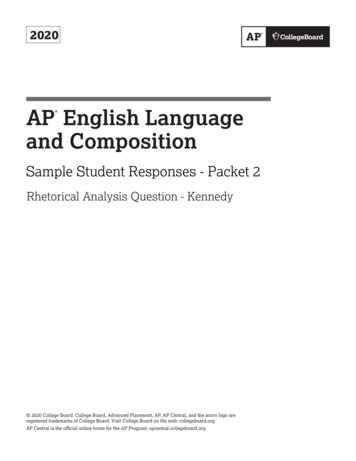
Transcription
2020AP English Languageand Composition Sample Student Responses - Packet 2Rhetorical Analysis Question - Kennedy 2020 College Board. College Board, Advanced Placement, AP, AP Central, and the acorn logo areregistered trademarks of College Board. Visit College Board on the web: collegeboard.org.AP Central is the official online home for the AP Program: apcentral.collegeboard.org.
AP English Language and CompositionRhetorical Analysis Free-Response Question (2020)Sample Student ResponsesSample A[1] Many Americans admired Kennedy and his administration when he was in the WhiteHouse. He was a loved man. Many share in fond memories of Kennedy up until his death, whenthe nation grieved for him. In this speech, Ronald Reagan uses the appeal to pathos withemotional tones, a common love for one’s country and president, and an admiring tone in orderto achieve his goal of raising money to create an endowment to found a new museum in honorof John F. Kennedy.[2] Throughout the speech, Ronald Reagan uses the rhetorical device of pathos to connectemotionally with his audience. In paragraph 10, Reagan reminds his audience of the grief thatthe people of America and the world felt when Kennedy was mercilessly assassinated. Hereminds the audience that, “when he died, when that comet disappeared over the continent, awhole nation grieved and would not forget” (para. 10). He compares Kennedy to a comet in thissentence to show that he was a person that people were to be in awe of. Kennedy did greatthings for the world and provided light for the world in the way that a comet flying over a darknight sky, would provide a beautiful light for the people lucky enough to witness the comet.Kennedy was that light in the world. In the rest of the paragraph, Reagan provides examples ofpeople across the globe mourning the loss of Kennedy. He provides examples of peoplemourning in Brazil, the Congo, and Warsaw to show the profound affect that Kennedy had onnot just the Americans, but the whole world. This use of pathos and the appeal to emotionproves to be effective for Reagan as it demonstrates to the people what affect Kennedy had onthe world. This use of rhetoric allows the people to ask themselves, if Kennedy and his death hadthis affect on people all over the world, then why would a library and museum not beconstructed in his honor? It is only logical that a man who changed the lives of peopleeverywhere be remembered by the world, let alone his country. When people hear of themourning that occurred after the death of Kennedy, they are more inclined to donate money toan endowment that will make this possible.[3] Reagan also appeals to people by using a common love for one’s country and presidentthroughout his speech to show people that all of the love people had for Kennedy must be putinto an acceptable way to remember him. In the sixth paragraph of the speech, Reagan capturesthe patriotism that was shown by Kennedy throughout his life. He makes a reference to a previousspeech of Kennedy’s from his inauguration when Kennedy proclaimed to the country to, “Ask notwhat your country can do for you--ask what you can do for your country.” This quote that Reaganreminds the audience of is a well-known quote from Kennedy, where his patriotism is shown as heis willing to do whatever it takes to serve his country, and reminding the audience that becauseKennedy would do whatever he had to do for the United States of America, they must dowhatever it takes to build the John F. Kennedy Presidential Library and Museum. Theincorporation of the “ask not” quote also shows the amount of people that trusted and followed1
AP English Language and CompositionRhetorical Analysis Free-Response Question (2020)Sample Student ResponsesKennedy and what he told them. Reagan provided a deeper insight into the quote when informingthe audience that many people who had heard that speech given by Kennedy at his inauguraladdress now work in the White House serving their country. Reagan demonstrates his own lovefor Kennedy in the seventh paragraph as he reveals to the audience that he did not love Kennedywhen they were opponents, but after the fact he was able to respect Kennedy. This goes to showthat even people who did not favor Kennedy were still able to see his courage and commitment tohis country, warranting the construction of a library and museum in his name. Paragraph 10 alsodemonstrates the closeness and love that people felt for President Kennedy as a New Yorker put asign on his door to close his business after the death of Kennedy that read, “Closed because of adeath in the family” (para. 10). Kennedy was similar to a family member for many people. He wasthe person who cared for them when no one else did. This love for Kennedy is what led to hiselection to the President of the United States of America. People often remember those that theylove in many ways. From a funeral, to burying them, to cremations and placing the urn upon themantle on the fireplace, family members will do anything to remember those that they love whohave passed. Most families in the world are not able to remember their loved ones through alibrary and museum in their honor, but when everyone in the country shares a common lovedone, who passed through a tragic event, people are willing to give money to support the libraryand museum for President Kennedy.[4] Although the Reagan was the opponent of Kennedy, at the time of this speech, he hadlearned to admire Kennedy for his patriotism and intelligence. Reagan reminds the people of thisintelligence in the fifth paragraph as he speaks of a book that Kennedy had written as a youngman that dealt with the subject of Hitler’s rise to power. Someone as intelligent as Kennedyshould not be someone that should be forgotten as Reagan is trying to remind people with thecreation of an endowment. Reagan also admired Kennedy for his sense of humour that, “couldleave his audience weak with laughter” (para. 4). A man that brought so much joy to people’slives should be able to bring the same joy even after his death, as Reagan is trying tocommunicate to his audience when he advocates for the installment of an endowment throughhis presence at the fundraising event and his speech. This joy that Kennedy brought to people inhis lifetime can be brought to people after his death as Reagan wants people to recognize bydonating money to keep the library and museum running. Reagan’s admiring tone is ultimatelyto remind the people of how much others admired Kennedy and they could continue to admirehim by talking a walk through his museum or reading about his administration in the library.[5] Throughout the speech Reagan was able to connect with his audience and receivesupport to create an endowment and found the John F. Kennedy Presidential Library andMuseum. His speech brought back fond memories for the American people that convinced themto donate to an endowment to support and fund the library and museum. Reagan’s effortsproved to be successful as the library and museum are still open today. Through Reagan’s use of2
AP English Language and CompositionRhetorical Analysis Free-Response Question (2020)Sample Student Responsespathos and emotion, reminding the people of a common love for one’s country and president,and an admiring tone towards Kennedy, he was able to secure the funds to support the libraryand museum in Kennedy’s honor. Through this speech, Ronald Reagan was able to remindpeople of the good times and laughs that Kennedy brought them and use those memories togain support to pay tribute to Kennedy through the support of his library and museum.3
AP English Language and CompositionRhetorical Analysis Free-Response Question (2020)Sample Student ResponsesSample B[1] President John F. Kennedy was one of the youngest, most shortly lived presidents inAmerican history. In the june of 1985, the presidential library and museum named for him held afundraising event attended by friends, family, and president Ronald Reagan to create anendowment to fund and support the presidential library. President Ronald Raegan employsparallelism and metaphor in his address to similar mourners of John F. Kennedy to create a reverenttone which he uses to pay his tribute to a great man taken too soon.[2] The rule of three is a supremely efficient tool in the manipulation of human emotion.There is little else more satisfying to human ears than the final third repetition or part of a phrase. Allpresidents are known for having taken advantage of this ability, and President Ronald Reagan isknown for having been a great speaker. In his description of Kennedy’s contradictory qualities,Reagan describes him as being “[S]elf-deprecating yet proud, ironic yet easily moved, highly literaryyet utterly at home with the common speech of the ordinary man”. Reagan wields parallelism of thesame phrase three times, giving his words a certain weight that only a triple employment ofparallelism can achieve, to influence his audience into a respectful, mournful state. Similarly, herepeats his assertion of parallelism in the rule of three in his description of “As a leader, as apresident, he seemed to have a good, hard, unillusioned understanding of man and his politicalchoices”. In his acknowledgement of Kennedy’s position and abilities, Reagan paints a picture ofsolemnity and respect from one great man of high position to another, wielding parallelism for aconducive, satisfactory flow to his words. In his closing paragraphs, when portraying the mourning ofa nation upon Kennedy’s death, he finally states that his predecessor was “[S]omeone essentially,quintessentially, completely American”. In this conclusionary honoring of Kennedy’s character,Reagan satisfactorily conveys to his audience his overwhelming respect for Kennedy, and his sharedand relatable greif, all accomplished through creating a reverent tone through parallelism.[3] As grand a speaker as Ronald Reagan was, he was an expert in the field of comparison.Regan knew that, although he was highly educated, many of Kennedy’s supporters were not - and ahighly favored way to breed understanding between two unlike parties, is comparison, especiallymetaphor. When sharing the amount of respect Regan has for Kennedy, Reagan is forced to admitin his political opposition of the other man; however, knowing that those unknowing of thecomplicated world of politics would not understand, he compares their relationship to when “[T]hebattle’s over and the ground is cooled, well, it’s then that you see the opposing general’s valor”.Through his direct comparison of a political competition to a war, his listeners could comprehendthe amount of respect he held for Kennedy. For although not everyone understands the workingminds of politicians, the valor of those who fight on a battle ground and the respect shared betweenthem is well known since childhood, when we are weaned on fairy tales of knights and chivalry. In arepeating description of Kennedy, Reagan compares him to an otherworldly entity by saying “Andwhen he died, when that comet disappeared over the continent, a whole nation grieved and would4
AP English Language and CompositionRhetorical Analysis Free-Response Question (2020)Sample Student Responsesnot forget”. All people, no matter where they hail from, hold a reverence for space. Through hisdirect comparison of Kennedy to a comet, Reagan is displaying his reverence obviously to thecommon people. And again, when at the end of his speech discussing history, he compares it to a“[G]reat house”, and Kennedy to “[M]usic” which “[P]lays on”. In this comparison, Reagan finallyreveals his overwhelming respect and reverence for Kennedy by comparing him to a significant partof history which will live on forever.[4] President Ronald Raegan employs parallelism and metaphor in his address to similarmourners of John F. Kennedy to create a reverent tone which he uses to pay his tribute to a greatman taken too soon.5
AP English Language and CompositionRhetorical Analysis Free-Response Question (2020)Sample Student ResponsesSample C[1] In Ronald Reagan’s speech at the dedication of the John F. Kennedy Presidential Libraryand Museum (1985), he asserts that the late President Kennedy was an admirable and patriotic manwho wanted what was best for his country. His usage of metaphors, contradicting descriptions, andquotations from other pieces help him to coherently describe Kennedy’s complex character as well ashis accomplishments as President. Reagan’s purpose in his dedication speech is to pay tribute to thelate President in order to remind American citizens of the ideas Kennedy embodied as President. Hedevelops a relaxed and almost casual relationship with his audience, the American citizens as well asworld leaders who may have been watching his speech, through a reflective and impersonal tone.[2] In the first lines of his speech, Reagan says that he had been thinking more of Kennedyhimself than of the library being dedicated. Reagan goes on to describe his character and itscomplexity through the use of many contradicting descriptions. This is most clearly evident in hissecond paragraph, as he uses phrases such as “self-deprecating yet proud”, “ironic yet easily moved”,and “highly literary yet utterly at home with the common speech of the ordinary man”. By givinginsight to Kennedy’s personality and character, Reagan is able to show the American people that hewas not just a President, but he was also someone many of them could relate to. This forces thepeople to see past his actions as President and respect him for what he was besides the title.Reagan’s usage of metaphors to describe how Kennedy thought also helps to put in perspective hisrelatability. His assertion, “He seemed to grasp from the beginning that life is one fast moving train,and you have to jump aboard and hold on to your hat and relish the sweep of the wind as it rushesby” is just one example of this. By using a metaphor, he tells Americans that he was a man withsimilar ideals many of them possessed. The idea of living in the moment and living fast is somethingthat many Americans live by, and by showing them that Kenned thought the same way, he is able toattest to his patriotism and relatability as a man, not necessarily as a President.[3] Reagan also attributes to President Kennedy by citing quotes from other pieces of work. Inhis third paragraph he attests to Kennedy’s love for history and provides and example of what waspresumably one of his favorite historical poems,“The aide-de-camp knew certain lines of GreekAnd other such unnecessary things that are good for peaceBut are not deemed so serviceable for war.”This poem is another tactic Reagan uses to pay tribute to Kennedy and make the American peopleaware of his character. The poem is seen as something the people can “share” in a sense with thePresident. Reagan presents something that some people might share with the late leader: the love ofhistory and poetry. Reagan also pays tribute to Kennedy’s infamous speech in which he says, “Ask not6
AP English Language and CompositionRhetorical Analysis Free-Response Question (2020)Sample Student Responseswhat your country can do for you --- ask what you can do for your country.” This quote serves as areminder of what Kennedy stood for as President and the ideals he wanted his citizens to live by. Itreminds Americans of the Presidential side of him in contrast to the aforementioned relatable side tohim.7
AP English Language and CompositionRhetorical Analysis Free-Response Question (2020)Sample Student ResponsesSample D[1] John F. Kennedy was one of America’s great presidents who left a legacy on the worldbefore he was assassinated in 1963. He was a very charismatic and charming leader, who warmed hiscitizen’s hearts throughout his candidacy for president. In honor of his legacy, The John F. KennedyPresidential Library and Museum was built to remember his fond memories as head of the country.President Ronald Reagan gave a touching speech at the fundraising event to pay tribute to the formerpresident. Reegan used powerful diction, playful anecdotes, and used Kennedy’s credibility toenhance his speech about him.[2] President Reegan used quality language to make his speech more memorable andeffective. The use of eloquent writing really left a mark on his citizen’s hearts as they listened to himpay tribute to JFK. Reegan did an excellent job portraying the great man that Kennedy was, “.hecould sum up a current statesman with an earthly epithet that could leave his audience weak withlaughter” (Reegan, 4). The lighthearted words the president used created a smile upon the faces ofhis audience. They are more susceptible to listen and contribute to the fundraiser if what they arehearing are pleasant things. Reegan also used metaphors to magnify his speech. He describedKennedy’s attitude towards life as if “he seemed to grasp from the beginning that life is one fastrmoving train, and you have to jump aboard and hold on to your hat and relish the swipe of the windas it rushes by” (Reegan 10). The President used his intelligence to help his listeners betterunderstand his message. His use of a metaphor created an encouraging visual image for his audienceto picture, which inspired his listeners to donate to the library.[3] Ronald Reegan also used high spirited anecdotes to intensify his speech for the JFKfundraiser. Throughout his speech Reegan quotes many things Kennedy enjoyed. He wanted to makehis speech seem more personal by describing the things that JFK was fond of, for example, “He lovedhistory and approached it as both romantic and realist. He could quote Stephen Vincent Benet onGeneral Lee’s Army” (Reegan 3). By telling the audience something unique about President Kennedy’spersonal life, it shows that the two presidents had a close bond. The spectators are more likely to beaffected by a speech delivered by a friend, than a stranger. Reegan’s incorporation of tales John F.Kennedy’s life helped to bring his speech to an intimate level. Because of this, his audience is morelikely to support the presidential library.[4] Finally, Reegan used President Kennedy’s credibility to make his speech more powerful. Heused a combination of pathos and ethos to get through to his listeners. Reegan narrated certainaspects of JFK’s life like how “We know from his many friends and colleagues--we know in part fromthe testimony available at the library--that he was self-deprecating yet proud, ironic yet easily moved,highly literary yet utterly one with the common speech of an ordinary man” (Reegan 2). As Reegandescribes how positive and charming JFK was the crowd’s hearts are filled with bittersweet emotions.This shows that President Kenndy was a great man towards everyone he encountered. By revealing8
AP English Language and CompositionRhetorical Analysis Free-Response Question (2020)Sample Student Responsesthat he was a righteous man, the audience is more open to really taking Reegan’s speech to heart.President Ronald also expresses JFK as a man of the people because “He was a patriot whosummoned patriotism from the heart of a sated country.he cared that his country would be safe”(Reegan 7). Ronald Reegan used more of an ethos approach with this quote by stating how much lovehe had for his country and people. This gave credibility to Kennedy because it showed how qualifiedhe was to be the President of the United States. People are more willing to fund a library dedicated toa certified leader.[5] President Ronald Reegan used mighty diction, personal anecdotes, and used Kennedy’scredibility to strengthen the speech about him. His persuasive wording amplified his ability to getthrough to his audience. Reegan’s use of playful stories gave his speech a more personal feel. Lastly,the president used ethos so the spectators would be more susceptible to take his speech into realconsideration. He wanted to move his citizens while honoring the assassinated president, John F.Kennedy. The rhetorical techniques he used really enhanced his speech, which increased the chanceof getting through to his audience. With a great speech he was about to pay tribute to JFK, whileencouraging the listeners to fund and support the presidential library.9
AP English Language and CompositionRhetorical Analysis Free-Response Question (2020)Sample Student ResponsesSample E[1] President Ronald Reagan met the Kennedy family at a fundraising event to help theKennedy Library foundation create a fund to support the presidential library. He presents a speech tothe population attending this fundraiser to pay tribute to John F. Kennedy. In his attempt to do so,Ronald Reagan uses rhetorical devices to achieve his purpose of his speech and make it as effectiveand heart warming as possible to his audience as well as the Kennedy family. The rhetorical devicesused by Reagan to achieve his purpose of his speech of paying tribute to John F. Kennedy areAtmosphere, Imagery, and Apostrophe.[2] Ronlad Reagan uses the rhetorical device atmosphere to achieve the purpose of hisspeech. He uses this rhetorical device to create a general emotional mood of his entire speech. Byrecognizing the kennedy library not for the library in itself but for John F. Kennedy, the man himself.He brings it back to the man who started it all and what he stood for. Reagan states in paragraph two“ He was a writer who could expound with ease on the moral forces that shaped John Calhoun'spolitical philosophy, on the other hand, he possessed a most delicate and refined appreciation forBoston's political wards ”. This brings back to many people memories of a great loss. Reagan usesthis atmosphere to get his audience to feel what he is feeling while also creating a tone to help hisaudience remember the man who stands for this library. Ronald Reagan reaches his goal for hispurpose using atmosphere to pay tribute to JFK but he also achieves that goal with Imagery.[3] Imagery is used by Ronald Reagan to achieve his purpose of his speech. He creates apicture for us of this man to show us an honorable man and communicate his success. In paragraph10 he states, “ I think that's how his country remembers him, in his joy when he died, when thatcomet disappeared over the continent, a whole nation grieved and would not forget.” This createsthe audience to remember JFK's death. It also sparks the reader to envision the comet disappearingand seeing his nation grieve. Reagan used this to spark emotion to remember what John F. Kennedystood for and what an impact his death had on not only his family but the nation. President RonaldReagan used Imagery to achieve his purpose of his speech by putting a picture in his audience's headof the man JFK was.[4] Reagn lastly uses apostrophe to achieve his purpose of his speech. He addresses the manhimself in his entirety and says his personality and what makes him a great person as well aspresident.10
AP English Language and CompositionRhetorical Analysis Free-Response Question (2020)Sample Student ResponsesSample F[1] Reagan wanted to give a strong argument to pay tribute to JFK. He use multiple rhetoricaldevices to make his speech better. In the article, Reagan uses a paradox and an analogy to showKennedy’s value.[2] To begin with, in the first paragraph, Reagan talks about how John F Kennedy was manythings, he says “He was self-deprecating, yet proud”. This is a paradox because he is contradictingeverything he says about Kennedy. By doing this, he means to explains that he has many things thatmake him a great man. He is a little bit of everything which is what makes him special.[3] To further continue, in the 8th paragraph, Reagan says, “But you know it’s true: when thebattle’s over and the ground is cool, well it’s then that you see the opposing generals' valor”. He isusing an analogy to explain how we did not take the time to appreciate who he was, until he wasgone.[4] Overall, Reagan uses specific rhetorical devices to give a strong argument to the publicabout Kennedy’s tribute and what it stands for.11
AP English Language and CompositionRhetorical Analysis Free-Response Question (2020)Sample Student ResponsesSample G[1] In the speech that Reagan made he uses Anaphora and Analogy in it. The use of thesedevices makes the writing more interesting. This makes the way a speech more interesting than thanknowing what they are saying, finding what they are trying to say is much more intriguing.[2] When Regan is describing how Kennedy is he uses Anaphora in his speech. In the secondparagraph he says “That he was self-deprecating yet proud, ironic yet easily moved, highly literary yetutterly at home with the common speech of the ordinary man.” When using yet in each sentence hehe makes it shown that he was all of those words. Using yet repeatedly makes a better understandingon how Anaphora is used to honor Kennedy in his speech.[3] In the tenth paragraph he uses Analogy to describe Kennedy’s way of life. He says“Everything we saw him do seemed to betray a huge enjoyment of life, he seemed to grasp from thebeginning that life is one fast moving truth,” He is comaning his life like a train ride and you have toenjoy your time. Using Analogy makes the story of Kennedy more lively.[4] In the speech he uses Anaphora Analogy to pay tribute to Kennedy to make a moreappreciated way by using in his speeches.12
AP English Language and Composition Rhetorical Analysis Free-Response Question (2020) Sample Student Responses 3 pathos and emotion, reminding the people of a common love for one’s country and president, and an admiring tone towards Kennedy, he was able to secure the fu





